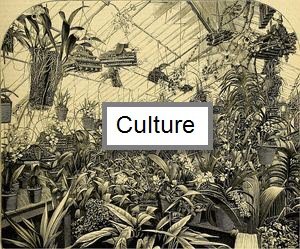Orchids, in fact all plants, require nutrition just like us to grow and reproduce. Plants take up nutrition in form of inorganic compounds present in the soil. In other words, the soil is composed of different types of mineral salts; like carbonates of calcium or sodium, different chlorides etc. Out of these soil minerals. Plants absorb some of minerals in large quantities and these are called macro-nutrients. There are others which are required and absorbed in very small amounts, called the micronutrients. Both types of nutrients are important for the plant and their deficiency in the plants (orchids) can be judged by deficiency symptoms. Such deficiencies can lead to poor or deformed growth, pest and diseases attacks.
Nutritional requirement for each type of orchid is different. and is determined by the various factors such as morphology, growth habit and consequent needs, prevailing environmental conditions.
When trying to apply fertilizers to orchids, first be aware of the particular needs of that orchid. If fertilizer instruction were supplied along with the orchid, read and follow those instruction carefully.
Most commonly used fertilizers are those which contain N (Nitrogen), P (Phosphorous), and K (Potassium) in different proportions. Fertilizers such as urea lead to an increase in leaf number. There are reports that fertilization does not have much effect on the flowering time, floral size or number of flowers.
A fertilizer having a higher proportion of Nitrogen as compared to Phosphorus, has a better effect on overall growth of the orchid.
There are two types of fertilizers: organic fertilizers and mineral or inorganic fertilizers. Sticking to just one type of fertilizer can harm the orchid more than doing it good. It is better to use a combination of organic and mineral fertilizers. This will help in supplying both kinds of nutrients (macro as well as micro) to the orchid. You can use a 1:1 mixture of organic and mineral fertilizers for your orchids.
Organic fertilizer is best when made at home. It is quite easy to prepare an organic fertilizer of leaf mold. Collect the fallen leaves in a pit and keep turning the leaves after an interval of few days. Turning leaves into leaf mold is work of bacteria and tiny insects. After about six months, when the texture and colour of the leaves changes to a dark clumpy stuff, your fertilizer is ready to be used in pots.

Fertilizer Use in Orchids
Cultureby Anu Dharmani
Originally published in BellaOnline
Posted by Sys Admin almost 9 years ago.Article Blog Article Index
Share on Social Media:
New Topics
- David George asked question Odom's Fascination - an unusual orchid in category General Discussion
- Carol Holdren asked question Grow Tent in the Garage in category General Discussion
- David George asked question rlc Caotan Beauty found at Home Depot in category Cattleya Alliance
- Kristin Dorris asked question Odontocidium Orchid fungus? in category General Discussion
- Maria Fernandez asked question Wild. Lisa Devos in category Dendrobiums
New Comments
- Carol Holdren commented on topic "rlc Caotan Beauty found at Home Depot " by David George
- Carol Holdren commented on topic "Odom's Fascination - an unusual orchid" by David George
- Dr. Florian Wolf commented on topic "Wild. Lisa Devos" by Maria Fernandez
- Michael Valcarcel commented on member plant Rlc. Chief Takanaka by Walceli Muniz Valverde
- Michael Valcarcel commented on member plant Rlc. Montana Spirit by Michael Valcarcel
- Michael Valcarcel commented on member plant Ctt. Blazing Sun by Michael Valcarcel
- Michael Valcarcel commented on member plant Bc. Spotted Clown by Michael Valcarcel
- Maria Skrypnyk commented on member plant Yamadara Redland Sunset by Maria Skrypnyk
- André Pessina commented on topic "Odontocidium Orchid fungus?" by Kristin Dorris
- Linda Hartman commented on topic "Image of a plant please" by Leshya Perkins
- Paul Reavis commented on orchid Milt. Kismet
- Christiaan Viljoen commented on member plant Psh. fragrans by Christiaan Viljoen
- Christiaan Viljoen commented on member plant Z. maculatum by Christiaan Viljoen
- Christiaan Viljoen commented on member plant C. Gaskell-Pumila 'Azure Star' by Christiaan Viljoen
- Robert H. Findlay commented on member plant Rlc. Joy Sokabe var. Volcano Queen by Sally K
- James Lunsford commented on member plant Lc. Sagarik Wax 'African Beauty AMO/AOS x Blc. Cherry Suisse'Kauai' HCC/AOS var. Cattlyea 'Hybrid ' by James Lunsford
- John Varigos commented on orchid Bulb. schwarzii
- Linda Hartman commented on topic "Issue with Blc. Ben O'Neil "Jubilee" by Glenda Ratliff
- Henry Shaw commented on member plant Ons. Catatante 'Los Roble' by Henry Shaw
- Mary Lane commented on member plant Den. Tianmu Canary by Terre Moore